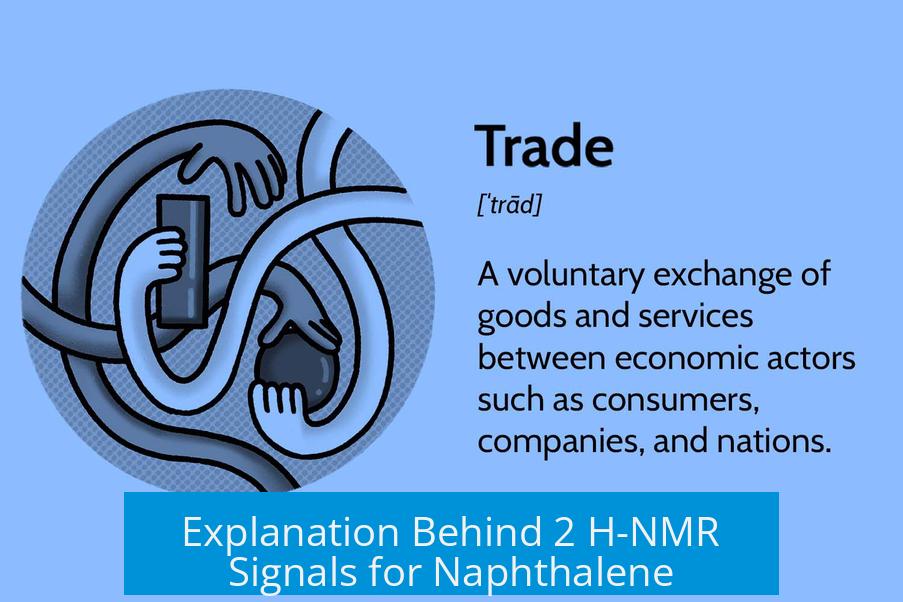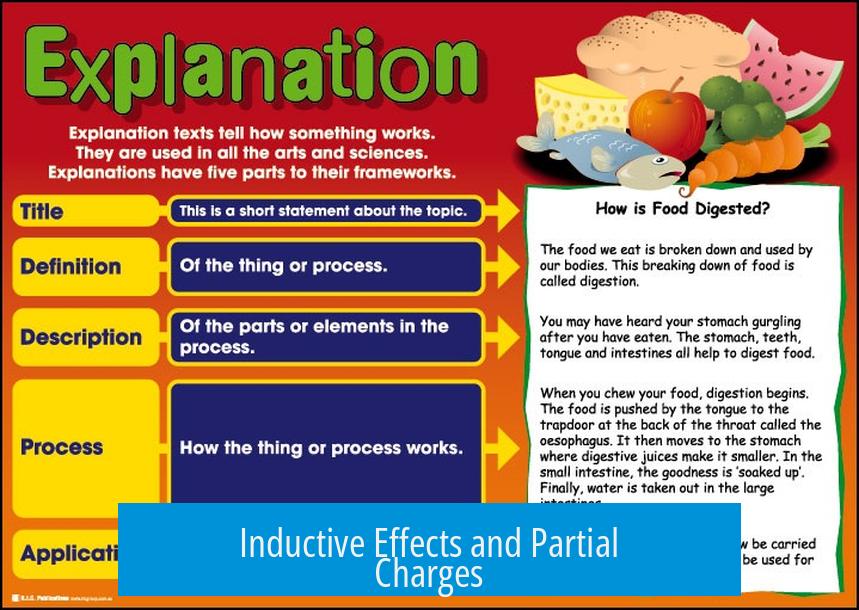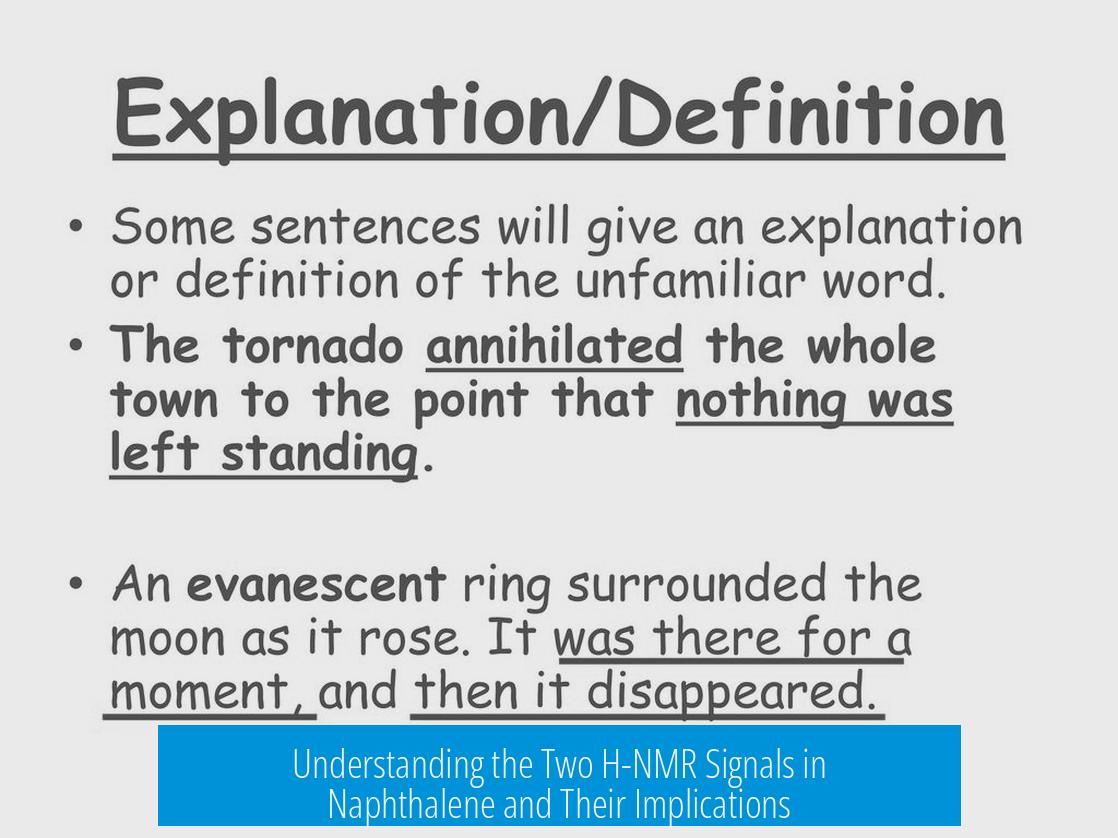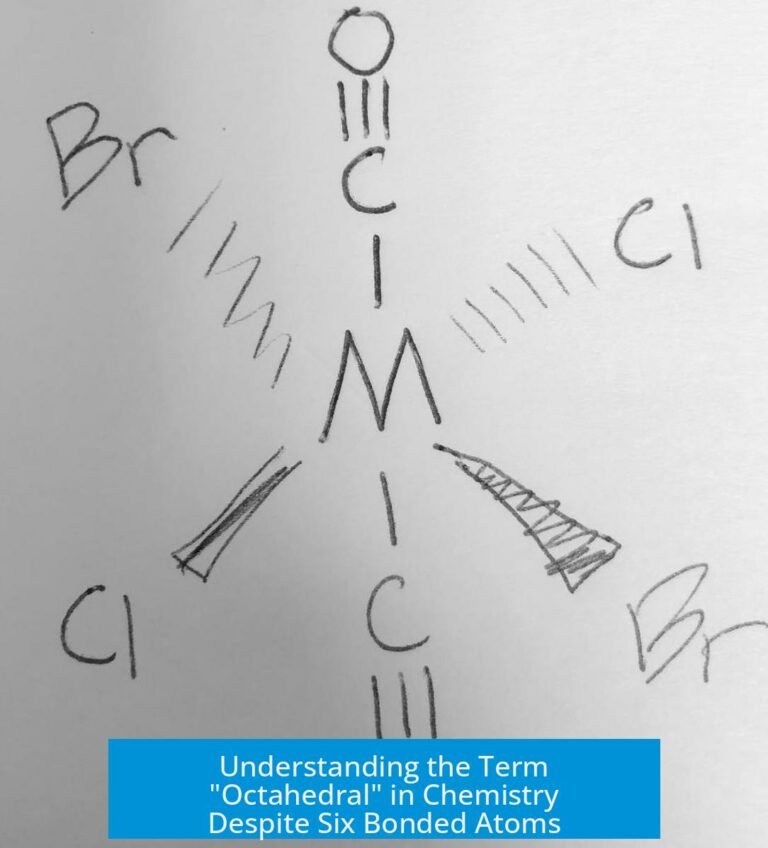Explanation Behind 2 H-NMR Signals for Naphthalene

Naphthalene shows two distinct signals in its proton NMR spectrum due to the different chemical environments of its hydrogens across the two ring systems. This differentiation arises from electronic and spatial factors influencing the protons, which result in distinctive chemical shifts.
Structural Context of Naphthalene
Naphthalene consists of two fused benzene rings with ten carbon-bound hydrogens. These hydrogens are not all equivalent because the molecule’s symmetry divides them into two groups: those at the “alpha” positions adjacent to the ring fusion and those at the “beta” positions farther away.
Steric Compression and Proton Deshielding
Steric compression among alpha hydrogens pushes them closer, increasing their magnetic environment’s density. This proximity causes these hydrogens to experience deshielding. In contrast, beta hydrogens encounter less steric strain, maintaining a different shielding level. This difference leads to two sets of proton signals.
Inductive Effects and Partial Charges

The electronic distribution in naphthalene also influences proton shifts. Middle carbons near the fusion point carry a slight positive charge due to resonance stabilization and inductive effects. This charge alters electron density around adjacent hydrogens, notably making the alpha hydrogens slightly more deshielded than beta hydrogens. Partial charge calculations support this behavior.
Second Order Effects in NMR
The coupling of neighboring protons creates complex splitting patterns known as second order effects. These effects can blur the distinction between signals but often amplify the presence of two separate proton environments. Therefore, signals in naphthalene’s spectrum reflect the nuanced interplay of proximate protons and electronic environments.
Assignment of A and B Signals
- Signal A corresponds to alpha hydrogens near the ring fusion points.
- Signal B matches beta hydrogens located away from the fusion.
These assignments come from comparing chemical shifts and coupling patterns with literature and computational data.
Key Takeaways

- Naphthalene’s protons are split into two groups due to distinct chemical environments.
- Steric compression deshields alpha hydrogens, causing different NMR signals.
- Inductive effects linked to partial charges influence proton chemical shifts.
- Second order NMR effects contribute to signal complexity.
- Signal assignments rely on coupling patterns and chemical shift data.
What Is the Explanation Behind 2 H-NMR Signals for Naphthalene?
Naphthalene shows two distinct proton signals in its 1H-NMR spectrum because of the different chemical environments experienced by its hydrogen atoms—namely, the hydrogens at the peri and bay positions encounter unique electronic and steric influences that shift their resonance chemically. This seemingly simple molecule isn’t as straightforward on the NMR stage as you might think. Why exactly does such an aromatic hydrocarbon exhibit two sets of signals instead of one? Let’s unpack the molecular mystery with a pinch of chemistry and dash of intrigue.
Naphthalene, made of two fused benzene rings, might look like a uniform playground for protons. But look closer: those ten hydrogens do NOT behave identically. This difference is the heart of why you see two distinct signals in 1H-NMR rather than a single peak.
Protons Aren’t Created Equal: Steric Compression’s Role
Imagine a crowded subway car—people pushed closer together than they prefer. In molecules, too, atoms can feel this spatial pressure, known as steric compression. This compression affects proton environments.
In naphthalene, some protons (let’s call them the “A set”) experience steric compression more intensely because they are forced closer together, particularly near the fusion points of the two benzene rings. This closeness reduces the electrons’ shielding effect. In NMR terms, these protons become deshielded, which makes their signals appear downfield (at a higher chemical shift).
Meanwhile, the “B set” protons are in less crowded neighborhoods. They enjoy a bit more electronic shielding and thus resonate differently. This subtle difference in proximity and local environment creates two distinct proton signals.
Electric Charges Are Playing Favorites: The Inductive Effect

Another piece to the puzzle is how the charge dances through the carbon skeleton, affecting the hydrogens like invisible puppets. The carbons in naphthalene do not all share electrons equally—some carry a slightly positive partial charge.
Philosophically, carbons at the central (tertiary) positions stabilize positive charges better than the secondary carbons at the edges. This uneven charge distribution nudges the nearby protons’ electron clouds, influencing their chemical shifts.
In other words, the A hydrogens, close to these relatively more positive tertiary carbons, feel an inductive pull. This pull makes their nuclear environment slightly electron-poor, pushing their ^1H signals downfield.
Studies and calculated partial charges on naphthalene’s carbons back up this idea, although the mechanistic details are still open for discussion. Scientists continue to debate whether this inductive effect or steric compression has more weight or how they blend their effects to cause the observed NMR shifts.
Second-Order Effects: The Spin-Spin Coupling Drama
When you peek at an NMR spectrum, the signals often look neat and clean. But in reality, neighboring nuclear spins interact, leading to splitting patterns called spin-spin coupling. In naphthalene, this interaction can become complex, especially since the protons are not all magnetic clones.
Sometimes, these spin-spin interactions create what scientists call second-order effects, where splitting patterns deviate from simple multiplets. This complexity can lead to subtly shifted signals or unexpected line shapes, further explaining why naphthalene’s spectrum resolves into two sets rather than more or one.
Think of second-order effects as feedback loops in a conversation—the more convoluted the chat, the harder it is to separate voices. NMR peaks sometimes carry this complexity in their splitting, contributing to how two signals emerge sharply from the otherwise crowded proton field.
Who’s Who? Assigning Signals to A or B Protons
Now, you might wonder: when you see these two signals, how do chemists know which corresponds to A or B protons? Was the spectrum pre-labeled like a party guest list? Not quite.
Signal assignment often relies on a combination of techniques. For example, 2D NMR methods such as COSY (Correlation Spectroscopy) help map couplings between protons, identifying which signals belong to which protons. Computational predictions of chemical shifts and partial charges also guide assignments.
Experimentalists might also look at chemical shift trends, multiplicities, and coupling constants. Together, these clues let scientists piece together the molecular story. Assigning peaks is a puzzle combining theory, experiment, and a bit of detective work.
Why Does This Matter? Practical Perspectives

Understanding why naphthalene presents two 1H-NMR signals is more than academic trivia. It sharpens chemists’ skills in interpreting spectra, crucial when characterizing unknown compounds or studying molecular interactions.
For example, in organic synthesis, knowing these subtle shifts guides chemists to confirm their target molecules or spot impurities. In materials science, it helps in studying polycyclic aromatic hydrocarbons’ behaviors, where electronic environments dictate properties.
This insight also invites curiosity: What if substituents replaced certain hydrogens? How would shifts reflect different electronic or steric conditions? NMR becomes a window into molecular architecture and dynamics.
Wrapping Up the Naphthalene Story
So, what’s really behind those two distinct 1H-NMR signals in naphthalene? It’s a combo of steric compression making some protons less shielded, inductive effects shifting electron density around the carbons, and the nuances of spin-spin coupling weaving complexity into the spectrum. These forces interact, making a simple molecule’s NMR spectrum a little more interesting than one might expect.
Next time you gaze at a neat 1H-NMR spectrum of naphthalene, remember it’s not just lines and peaks—it’s a molecular dance of space, charge, and interaction telling a layered story. And now you’re clued in on the main plot.
Why does naphthalene show only 2 signals in its 1H-NMR spectrum?
Naphthalene has two sets of chemically equivalent protons due to its symmetrical structure. This results in just two distinct signals in the 1H-NMR spectrum.
How does steric compression affect the proton signals in naphthalene?
Steric compression pushes one set of protons closer together, causing them to become deshielded. This shifts their signals differently compared to the other protons.
What role do inductive effects play in creating two 1H-NMR signals for naphthalene?
Partial positive charges on certain carbons influence nearby hydrogens through induction. This changes the local electron density, causing distinct chemical shifts for two proton sets.
What are second order effects in naphthalene’s 1H-NMR, and how do they affect the signals?
Second order effects occur when spin-spin couplings are complex, causing unusual splitting patterns. This can complicate the shape of the two proton signals in the spectrum.
How can one assign which proton set corresponds to each 1H-NMR signal in naphthalene?
Assignments are based on chemical environment and calculated partial charges. Experimental data and labeling from literature help distinguish the A and B proton sets.





Leave a Comment